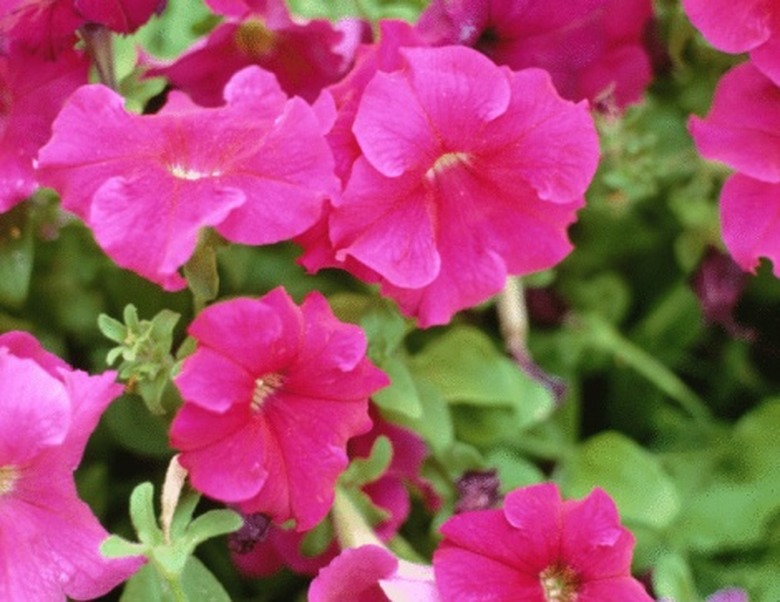What Flowers Are Best For A Laying Down On Its Side Pot?
A broken pot doesn't need to be tossed in the garbage; it can make a fine garden accent if turned on its side and planted with flowing annuals, perennials or grasses. A broken half-pot sunk into the ground can become a container for dramatic moisture-loving plants such as dinosaur food (gunnera), calla lilies, reeds or ligularia, turning a calamity into an asset. Of course, the pot can be intact as well, lying on its side sunk partially into the ground and planted horizontally.
Go With the Flow
Go With the Flow
The best choices for a pot lying on its side are plants that will seem to be spilling from its opening. Choose plants that spread horizontally, such as ground covers, mounding or trailing annuals and perennials and soft-textured grasses that will seem to be flowing from the pot's mouth. Avoid upright plants or plants that grow taller than about 6 inches.
Annuals and Perennials
Annuals and Perennials
The deep jewel colors of Million Bells (Calibrachoa spp.), ivy geraniums and trailing petunias are a good choice for a bright burst of color spilling from a sideways pot. Nasturtiums, another trailing annual with flowers in orange, yellow and red, also works well. Trailing perennials such as sun rose (Helianthemum spp.), campanula, ornamental oregano, golden variegated sage and prostrate rosemary are other good choices.
Ground Covers
Ground Covers
Ground covers are a natural choice to create the look of a sea of plants emerging from a pot's mouth. Arabis and aubrieta, which cover themselves with magenta, white or purple flowers in spring, offer this effect. Saxifraga, lady's mantle and mosses are options for shady spots. For sunny areas, try trailing raspberry or strawberry, groundcover daisies (Bellis spp.), creeping phlox or succulents.
Flowering Grasses
Flowering Grasses
Japanese forest grass, which comes in varieties with striped gold, green and pink, as well as white and green and solid gold, is a flowing grass that grows about 18 inches tall and gives the impression of fountaining up out of the pot mouth. As it moves in the breeze, it simulates the movement of water. Its blooms are light, airy seedheads. Other choices are black mondo grass, which spreads by rhizomes and has tiny white blooms followed by black berries, and blue moor grass (Sesleria caerula), which has blue-green leaves and a loose, trailing habit. Its blooms are bronze.
References
- Clemson University Cooperative Extension; Growing Annuals; Karen Russ and Bob Polomski; June 1999
- Colorado State University Extension; Ground Covers and Rock Garden Plants for Mountain Communities; L. Potts and I Shonle; February 2008
- Bluestem Nursery; Ornamental Grasses; Sesleria
- Clemson University Cooperative Extension; Groundcovers; Marjan Kleupfel and Bob Polomski; October 1999
